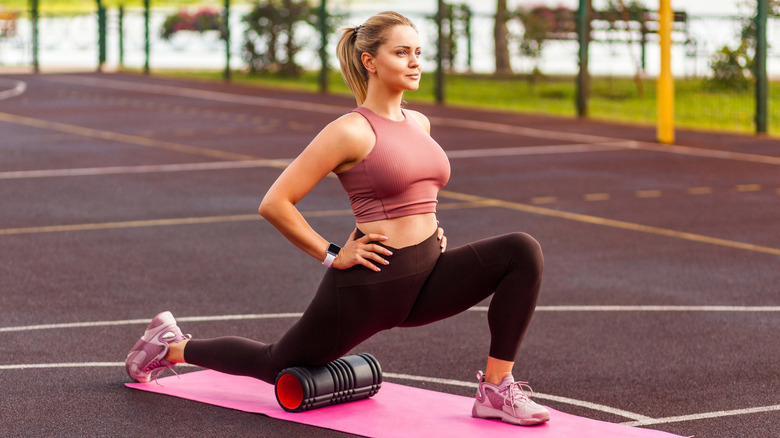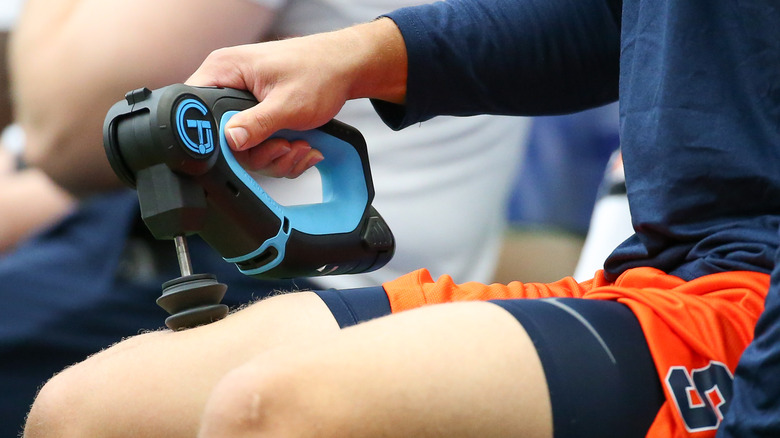Foam Rollers Vs. Massage Guns: Which One Should You Use?
Wondering whether you should use a foam roller or a massage gun for sore, tired muscles? While both devices can be effective, they work differently and have distinct features.
For starters, you should know that either tool can be used for myofascial release, a massage technique that applies pressure to tight or sore areas, explains the Cleveland Clinic. This form of therapy helps release trigger points, leading to pain relief, improved circulation, and greater mobility. It also promotes relaxation and facilitates tissue repair.
Myofascial release can relieve the pain and discomfort associated with strenuous workouts, poor posture, sports injuries, and muscle imbalances.
Moreover, it may attenuate joint pain, reduce anxiety, and improve sleep in fibromyalgia patients, according to research published in the journal Evidence-Based Complementary and Alternative Medicine. As the scientists note, this form of therapy decreases pain sensitivity and enhances physical function while increasing levels of serotonin, one of the "happy" hormones that promotes mental well-being.
When it comes to foam rollers versus massage guns, you can use either tool to relax your muscles and reduce tension. Choosing one over the other depends on your needs and budget. Foam rollers are cheap and convenient, but you have to put in a little work to reap their benefits. Massage guns like Theragun and Hypervolt have more advanced features and do all the work for you, but these perks come at a price.
With that being said, here's what you need to know before making a decision between a foam roller and a massage gun.
Is it better to use a foam roller or a massage gun?
Gym-goers use foam rollers to recover faster from training and break up muscle knots. In clinical trials, this practice has been shown to prevent knots and adhesions, reduce injury risk, and increase range of motion, reports the National Academy of Sports Medicine.
Evidence suggests that foam rolling has small but significant effects on sports performance (per Frontiers in Physiology). For example, it can reduce pain perception and muscle soreness, resulting in quicker recovery. However, researchers don't fully understand its mechanism of action and say that its benefits are largely psychological.
Massage guns serve the same purpose as foam rolling, but they work differently. First of all, they use vibration to apply bursts of pressure to the affected area, which allows for a deeper massage. As a result, they increase blood flow to your tissues, reducing pain and soreness, explains Consumer Reports.
Second, these devices allow you to adjust the pressure and massage hard-to-reach muscles. The downside is that they can be quite heavy, noisy, and expensive. A cheaper model is unlikely to make much of a difference.
All in all, both foam rollers and massage guns can aid in recovery and improve physical function.
"I'm not convinced there's that significant a difference between the net benefits of a gun compared to a roller," sports physical therapy specialist Erwin Seguia told Shape. Plus, neither of these tools can replace the benefits of getting adequate sleep and eating the right foods, notes physical therapist Grayson Wickham.

